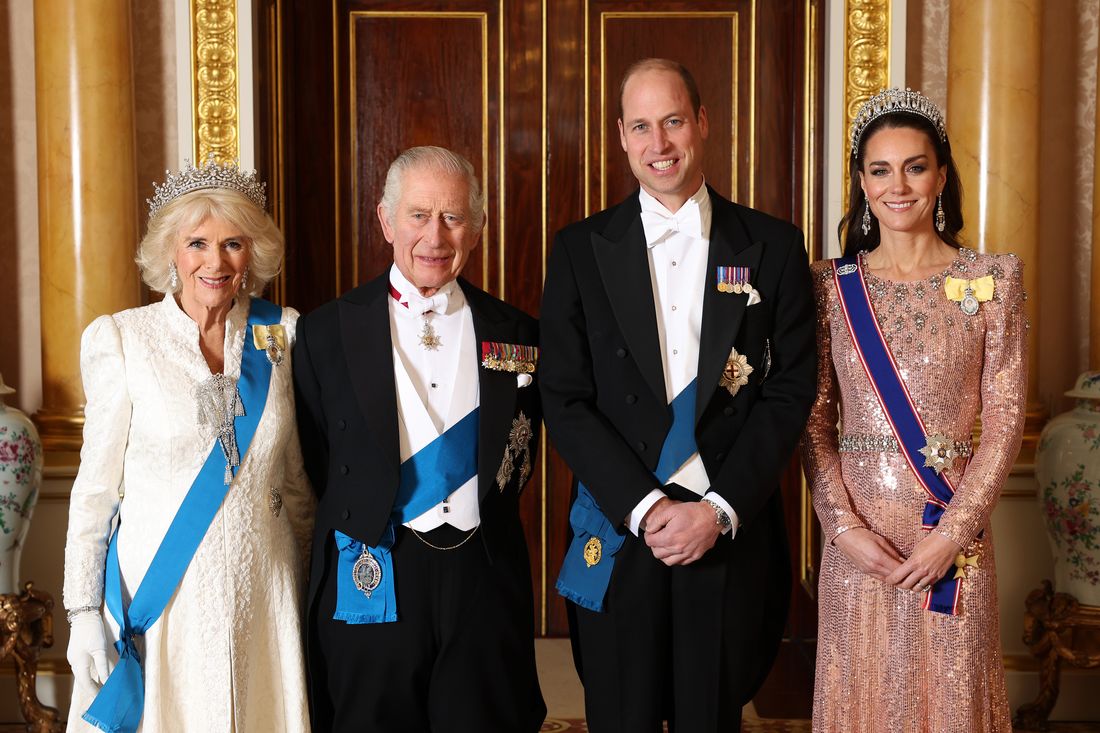
To outsiders, the British royal family can seem like a curio. They are gaudy waxworks who promote tourism and evoke the time when this country ruled a fifth of the globe. They signify the myth of British exceptionalism and embody a sensibility more rooted in the Blitz than the 21st century: patience, good manners, and repression (spun into health as a stiff upper lip). They are a strand of our national culture, like Miss Marple, Sherlock Holmes, and Earl Grey tea. They are remote and inhuman: near-fictional beings.
But the reality is crueler and more serious. That we in Britain obsess over the Windsors — rather than, say, the cost-of-living crisis, the wreckage of Brexit, or galloping child poverty — is typical of our semi-functioning politics. Like all fairy tales and fables, monarchy infantilizes us, and like a drug, it eats into real life, starting with the lives of the royals themselves. Princess Diana was a fairy-tale princess until she ended up dead. Now, with a swiftness that no one could have expected after the death of Elizabeth II in 2022, the monarchy is potentially fracturing.
Unreliable leadership has become a commonplace in Britain — four prime ministers gone since 2016, and a fifth, Rishi Sunak, likely on his way out later this year — but the royal family is for the first time in living memory also proving unstable. Prince Andrew, the king’s brother, was exiled from Buckingham Palace for sexual predation. Prince Harry exiled himself with testimony about racism toward his wife, Meghan. Now, 18 months into his reign, King Charles III is sick with an unnamed cancer and has all but withdrawn from public life. Catherine, the Princess of Wales (née Kate Middleton), is also sick, sparking a transatlantic tabloid frenzy that has put intense scrutiny on her marriage to Charles’s successor, Prince William, of a kind reminiscent of the trauma that cracked the marriage of Charles and Diana. The lurid headlines suggest the matter is frivolous; rather, they mask a crisis.
Catherine was hospitalized in January for a planned abdominal procedure and has not been seen publicly since Christmas, except in a photograph published on TMZ in March in which she was being driven in a car by her mother. Her appearance at Trooping the Colour — another curio of ours with horses this time — in June was confirmed, then not confirmed. The website formerly known as Twitter is aflame with rumors and conspiracy theories. Catherine has run away, she has changed her appearance, she has a love rival, she is anorexic, she is dead. The rumors are so numerous that William’s office issued a comment that passes for snark in royal officialese: “His focus is on his work and not on social media.” On March 10, the palace released an official photograph of a smiling Catherine with her three children, though news agencies later stopped circulating the image because it may have been manipulated, further fueling speculation that the family is hiding something.
The royal family must be seen to be believed — Elizabeth’s personal mantra. Royal men blind us with medals and starbursts (Charles had two crowns at the coronation), and royal women color-block as if they were pieces of candy. And now the two most charismatic royals are absent. The king, the best-dressed man in Britain, is meant to be seen walking to church in a tailored suit, while it is the job of the Princess of Wales, who inhabits an entirely visual medium (to hear her speak is always a surprise), to be photographed in the Times of London laughing at things. Without them, we are left with ancient, unphotogenic unknowns who seem to come from King Lear rather than life (the nobles Gloucester and Kent, anyone?) and the two reluctants: Prince William and Queen Camilla. Reluctants will not do. We like our human sacrifices willing.
You are not allowed to say that William, who watched his mother be destroyed by monarchy, doesn’t want to be king. But people believed it so much that in his official 21st-birthday interview, he had to deny it. “It’s not a question of wanting to be,” he told the Press Association. “It’s something I was born into, and it’s my duty. Wanting is not the right word. But those stories about me not wanting to be king are all wrong.” The best description I have read of William said he looked like he wanted to punch the door of every car he got out of. I think he cares more for his children than the crown, and that is admirable, but it’s not the way to keep it.
Then there is Camilla, whose dedication to being Queen of England was such that, when the besotted then-Prince Charles courted her in the early 1970s, she married someone else. Nothing about the queen suggests she wants this. On her wedding day to Charles in 2005, she couldn’t get out of bed. Her sister Annabel had to threaten to marry Charles in her place.
We treat the royals like pandas, as Hilary Mantel wrote, or toys — you can buy a model of Prince William or a jigsaw puzzle of Elizabeth — but they are pandas and toys with a serious purpose. They occupy a space at the top of the state to prevent something more malevolent from occupying it, and they are rich enough not to be bribed. Above all, they are meant to be there, timeless, a stay against the upheavals and terrors of history and life. That is the argument for constitutional monarchy, anyway, if you don’t mind too much conservatism.
The madness — theirs and ours — begins when we invest them with magic. Few would welcome the return of absolute monarchy, but magic is the relic of ancient kingship we are most attached to. The witch-goddess Elizabeth II: Watch her in an inky green cape on a Scottish moor looking cross. It is such a plausible myth that even I, an anti-monarchist, partially believe it. Elizabeth was well cast as a queen regnant: silent, healthy, dutiful, and wry. Her admirers would say she was the best of us, and she protected us from harm. Certainly she was, for a member of the royal family, sane and tough. (It’s a contradiction that to uphold madness, you must be sane, but it is true.) When she died, we were not surprised — that would be insane, even for monarchists — but we were shocked. In retrospect, she appears to have been singular. Those who remain are less tough and less sane. At her death, she was probably the last person in Britain to believe in sacred monarchy, and it is possible that when she left, she took it with her. I wonder what she would say to that. We are all in conversation with the witch-goddess, even when she is a ghost. It’s part of the spell.
Perhaps the current crisis, no matter how acute, is temporary. When Queen Victoria mourned for her dead husband, Albert, going into seclusion and later appearing only in black, affection for the monarchy waned — it recovered when she did. Perhaps Charles III will rally; Catherine will, too. But the signs say a malaise has settled upon the House of Windsor, and signs belong to monarchy and all magic systems. The contortion of monarchy is not suited to a modern world that is too knowing to be ruled by kings but desperate for something beyond the grubby politicians who rule them in actuality. But these royals are unhappy, angry, sick, like the people they nominally govern. In the film Excalibur, the knight Perceval tells the ailing King Arthur, “You and the land are one.” It feels mad to type it, but it’s still true now.
Related
- Happy Birthday to Prince Louis
- Is Kate Middleton’s Family Really in Debt?
- What It’s Like to Be a Member of the Royal Press Pack




